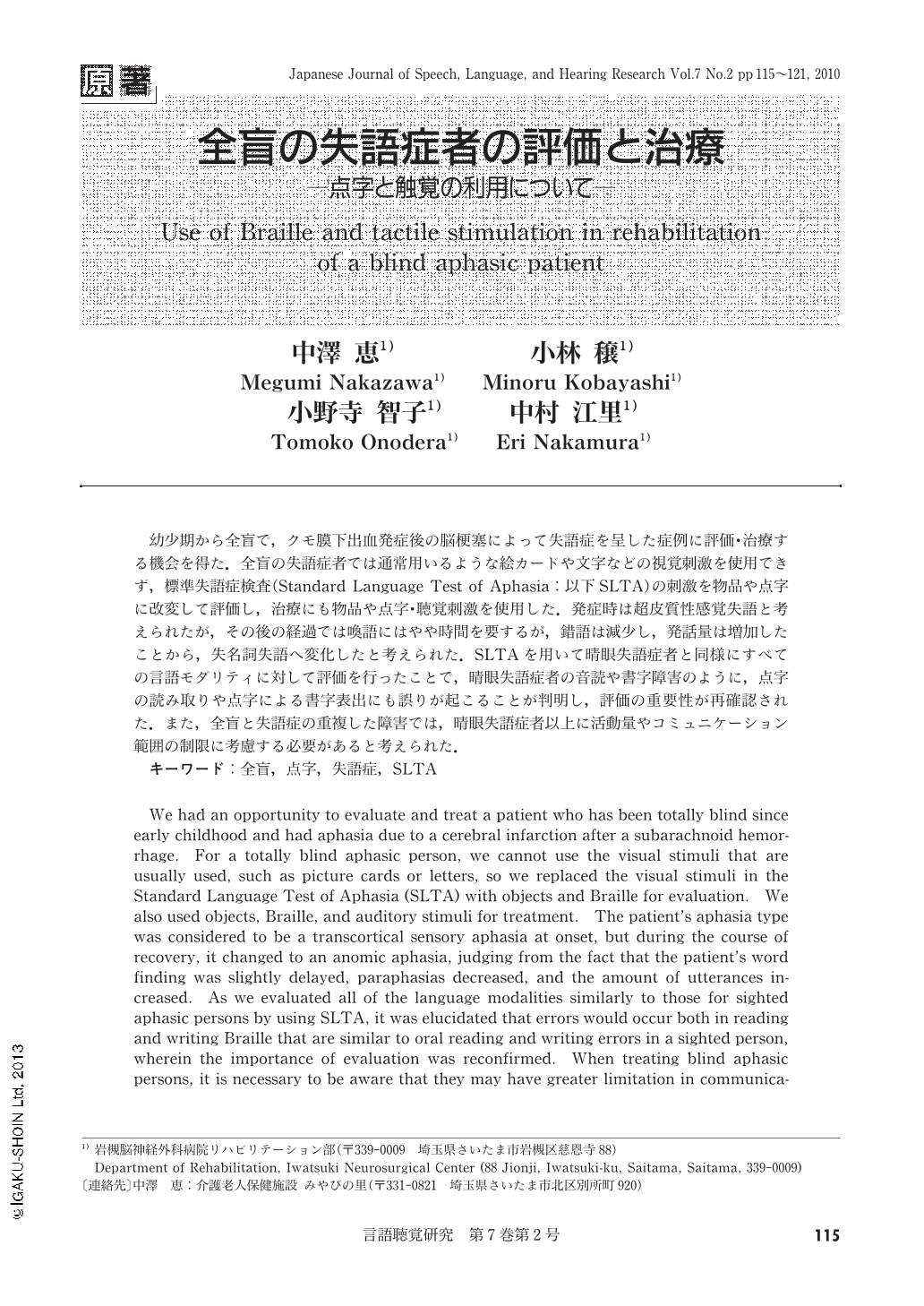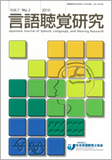Japanese
English
- 有料閲覧
- Abstract 文献概要
- 1ページ目 Look Inside
- 参考文献 Reference
幼少期から全盲で,クモ膜下出血発症後の脳梗塞によって失語症を呈した症例に評価・治療する機会を得た.全盲の失語症者では通常用いるような絵カードや文字などの視覚刺激を使用できず,標準失語症検査(Standard Language Test of Aphasia:以下SLTA)の刺激を物品や点字に改変して評価し,治療にも物品や点字・聴覚刺激を使用した.発症時は超皮質性感覚失語と考えられたが,その後の経過では喚語にはやや時間を要するが,錯語は減少し,発話量は増加したことから,失名詞失語へ変化したと考えられた.SLTAを用いて晴眼失語症者と同様にすべての言語モダリティに対して評価を行ったことで,晴眼失語症者の音読や書字障害のように,点字の読み取りや点字による書字表出にも誤りが起こることが判明し,評価の重要性が再確認された.また,全盲と失語症の重複した障害では,晴眼失語症者以上に活動量やコミュニケーション範囲の制限に考慮する必要があると考えられた.
We had an opportunity to evaluate and treat a patient who has been totally blind since early childhood and had aphasia due to a cerebral infarction after a subarachnoid hemorrhage. For a totally blind aphasic person, we cannot use the visual stimuli that are usually used, such as picture cards or letters, so we replaced the visual stimuli in the Standard Language Test of Aphasia (SLTA) with objects and Braille for evaluation. We also used objects, Braille, and auditory stimuli for treatment. The patient's aphasia type was considered to be a transcortical sensory aphasia at onset, but during the course of recovery, it changed to an anomic aphasia, judging from the fact that the patient's word finding was slightly delayed, paraphasias decreased, and the amount of utterances increased. As we evaluated all of the language modalities similarly to those for sighted aphasic persons by using SLTA, it was elucidated that errors would occur both in reading and writing Braille that are similar to oral reading and writing errors in a sighted person, wherein the importance of evaluation was reconfirmed. When treating blind aphasic persons, it is necessary to be aware that they may have greater limitation in communication compared to sighted aphasic persons.

Copyright © 2010, Japanese Association of Speech-Language-Hearing Therapists. All rights reserved.


